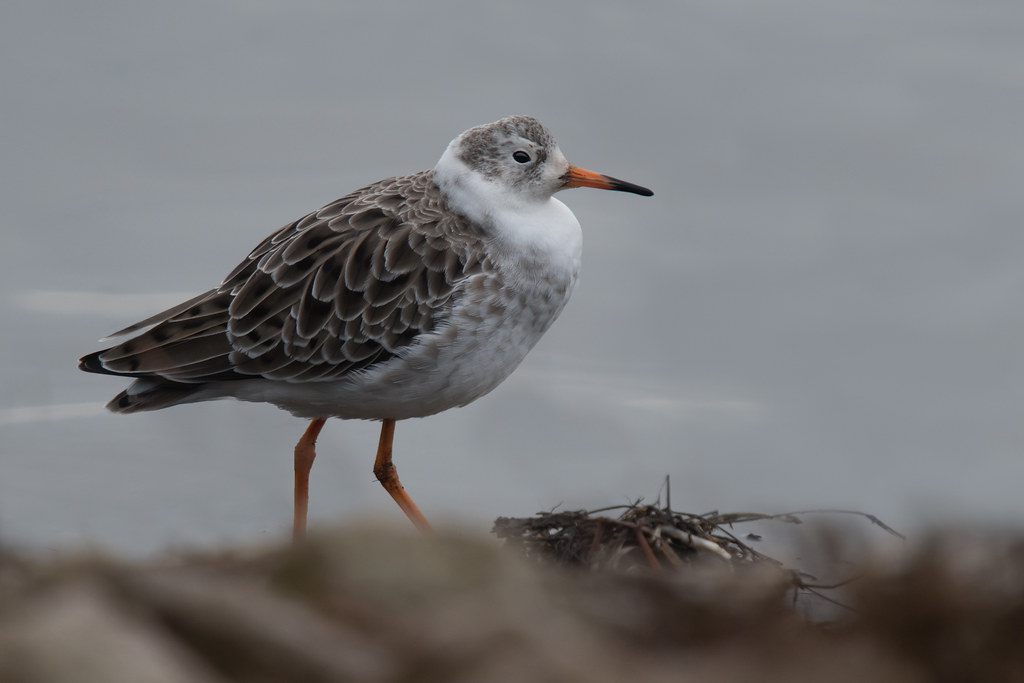
Tim writes: Ruff is one of only two British birds where the males are routinely called by a different name to the female (Reeve), the other being Blackcock and Greyhen. Ruffs and Reeves were both first noted in print in 1634 and were identified as such in Ray’s 1678 work, which was the first bird book written in English (not Latin). But the variant “Ree” was used more than a century earlier than Ruff (in 1512) which is an ancient dialect word meaning frenzied, which must refer to the males’ behaviour at the lek rather than the females. Reeve (meaning officer or governer) seems to be a secondary form of Ree, and probably arose in allusion to the males’ ornate breeding plumage. Ray (1678) seems to be the first to have specified that Ruffs were the fancy males and Reeves were the plainer, smaller females, and this use has been with us ever since. The name Ruff, comes from the huge collars that were fashionable from the mid-sixteenth to mid-seventeenth centuries, and which the males in breeding plumage resemble.
But it is more complicated than that, because of the highly variable plumage (breeding and non-breeding) and the size difference of males and females, numerous names have been given to these variants. Thomas Bewick’s Water Birds (1804), which is 126 years after Ray, listed 4 additional sandpipers which were almost certainly Ruffs or Reeves (Greenwich, Equestrian, Yellow-legged and Gambet Sandpipers) but George Montagu sorted out the confusion in 1813 stating that these were all Ruffs. This non-breeding male with a white-head is what was known as a Greenwich Sandpiper in Bewick’s time. In Britain Ruffs are mainly known as a common passage migrant en route to and from Scandinavian breeding grounds and African wintering grounds. This passage is mainly in April and again in August and September. But a small number also breed in Britain, and fewer than a thousand remain in Britain throughout winter. That is rare compared to most wintering wading birds (eg Dunlin with 340,000 wintering in Britain) and this was one such wintering bird at Martin Mere in Lancashire, where around 50 Ruff overwinter.
The scientific name used to be Philomachus pugnax, though it has recently been lumped in with Calidris like Dunlin and Sanderling. Philomachus means “fight-loving” and pugnax means similar (combative or fond of fighting). These refer to the aggressive lekking displays of males which gather to display and fight at traditional grounds known as leks.
Mark writes: and it gets more complicated still, as there are at least three behavioural forms of male Ruff which have different plumages and different strategies for getting to mate with females. A brief account can be found in Remarkable Birds p111-12.
[registration_form]